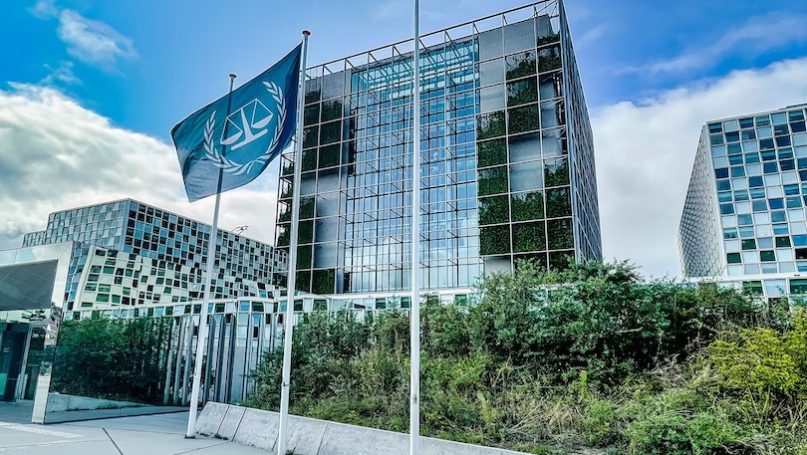
This case study is an excerpt from McGlinchey, Stephen. 2022. Foundations of International Relations (London: Bloomsbury).
The International Criminal Court, based in The Hague, Netherlands, is the only permanent international court adjudicating on the criminal responsibility of individuals. This includes state leaders and other representatives indicted for genocide, crimes against humanity, war crimes or acts of aggression (international crimes). Although the jurisdiction of the Court is conditioned on proof that local courts have been unwilling or unable to investigate the alleged crimes, which means that local courts have priority in investigations, the potential jurisdiction of the International Criminal Court is a notable restriction on state sovereignty. It took up its functions in 2002 when its founding treaty, the Rome Statute of the International Criminal Court, entered into force. Over 120 states have ratified the statute, but powerful states such as India, China, Russia and the United States are not yet parties. The International Criminal Court is not to be confused with the International Court of Justice (which primarily settles disputes between states). The law on individual criminal responsibility for the most horrendous crimes is an apt example for demonstrating norm development as multiple actors contributed over time, and in many different ways, to the norms of international criminal law.
The idea that some acts, such as piracy and slavery, are criminal directly under international law goes back many centuries. In more modern times, the notion that war criminals could be held accountable before international tribunals was discussed after the First World War, but it was only after the Second World War that this came into being when the allied powers established international military tribunals in Nuremberg and Tokyo. The prosecution of political and military leaders before international tribunals complemented the numerous domestic trials of war criminals in many different states. The international tribunals contributed to the definition and application of the international crimes that we know today. The development of the relevant legal norms was furthered by the UN International Law Commission which first elaborated the Nuremberg Principles on international crimes. After the Nuremberg trials, the UN General Assembly requested the Commission to begin work on a draft code of offences against the peace and security of mankind. The latter project led eventually to the elaboration of a draft statute for an international criminal court. This preparatory work did not only influence the statutes of the first two ad-hoc international criminal tribunals for the former Yugoslavia and Rwanda in 1993 and 1994 respectively, but formed the basis for the subsequent negotiations of the Rome Statute.
An assessment of the effectiveness of the International Criminal Court depends on one’s outlook on international society. Realists and other critics doubt its effectiveness and point to the low number of proceedings that have been initiated and brought to conclusion. They highlight that several of the most powerful states (including the United States, Russia and China) have not ratified the Rome Statute and stress the lack of co-operation from states in collecting evidence and securing witnesses. Liberals, on the other hand, argue that the Court is evidence for international cooperation to achieve greater global justice. It shows how wider social preferences in international society of what counts as unacceptable state behaviour can shape decisions to create enforcement mechanisms. The International Criminal Court is, in this reading, proof of the regulatory power of international organisations. Critical theory approaches take issue with these liberal assumptions. They point to the impossibility of the Court to live up to its aspirations while operating in a flawed political landscape. They criticise the liberal professional culture of international criminal lawyers who claim to deliver judgments in the name of humanity and thus engage in the biased promotion of new standards of ‘civilisation’.
For most international lawyers such theoretical discussions bring little to the practical problems they face. In their day-to-day business they focus in a more pragmatic manner on the tasks of securing witnesses, collecting evidence and preparing arguments. International criminal law, just like international law, has created a practice that builds on professional knowledge, learned techniques and a sense of legal obligation. There can be little doubt that these criminal tribunals have influenced the legal development of international criminal norms through their interpretation and use of these norms. In addition, numerous domestic trials as well as historical clarification and truth commissions in Latin America and South Africa contributed to the practice of transitional justice norms (see Sikkink 2011). From a constructivist perspective, these norms develop slowly and are intrinsically connected to discourses and contestations between professionals and wider society of what is acceptable.
Institutions often play a crucial role in this norm development. Several actors during different periods contributed to the development of these norms, including international and domestic courts, experts, regional institutions and (of course) international organisations. The acceptance and application of legal norms by an institution gives them content and meaning. If institutions with a high degree of binding authority, such as courts and tribunals, adjudicate and enforce norms, this contributes not only to the effectiveness of these norms. It also strengthens the normative and organisational context in which the acceptance of the norms becomes institutionalised through the establishment of professional networks and cultures. However, the leaps in the development of international criminal law happened mostly as a response to crisis (see Charlesworth 2002), not because of a universal concern ‘to fight impunity’ or ‘to improve the lives of vulnerable groups’. Even if depictions of normative developments can imply a continuous trajectory through history, these narrations of progress are often drawn with hindsight and do not convey all the breaks and setbacks that have occurred and are likely to occur again which can be understood more fully by comparing Moyn (2010) with Sikkink (2017).